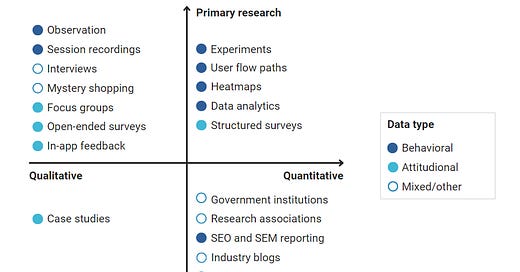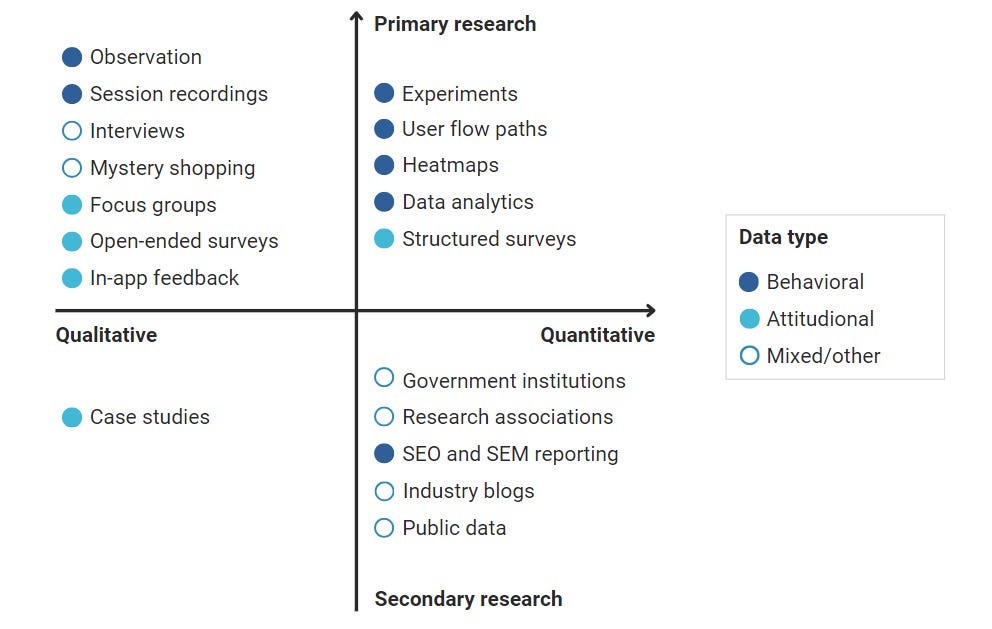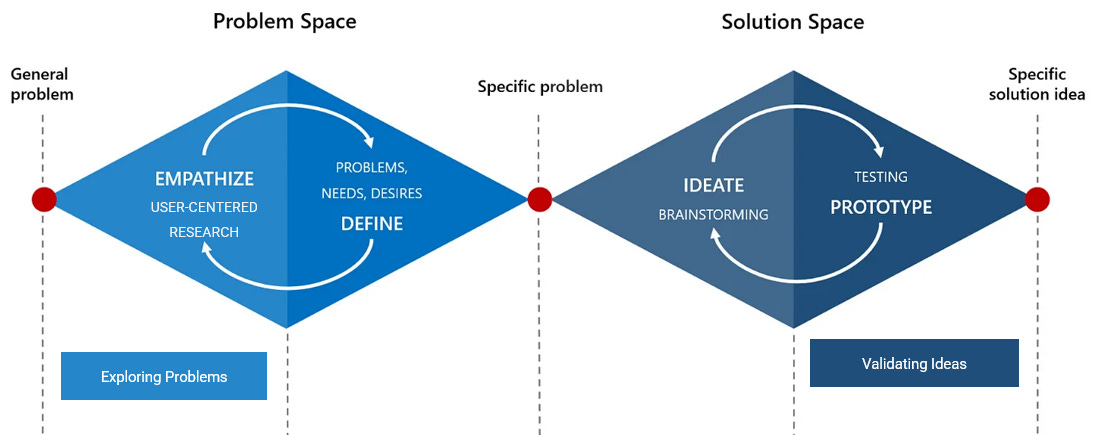Market Research: Advanced Techniques
How to make better decisions and innovate as a product team. Methods, tools, templates, and examples.
Hey, Paweł here. Welcome to The Product Compass!
Every week, I share actionable tips to help you learn and grow as a PM.
If you are not a premium subscriber, here’s what you might have missed:
Free: How to Build the Right Product with Alberto Savoia (ex-Google)
Premium: User Journey Mapping 101
Premium: OKRs 101 + Advanced Techniques
Premium: A/B Testing 101
Premium: The Product Frameworks Compendium
Premium: The Ultimate List of Product Metrics
Market Research: Advanced Techniques
In Today’s newsletter:
What is Market Research?
Classification of Market Research Techniques
🔒 Primary Market Research Techniques
🔒 Secondary Market Research Techniques
🔒 9 Models Everyone Should Know
1. What is Market Research?
Market research is collecting and synthesizing information about a market and competitive landscape, including:
Competitors.
Industry trends.
The problems people have.
People’s common characteristics (“personas”).
Its goal is to help you make better decisions about how the company should invest its time and resources, such as:
Which types of products should we invest in?
Who are our customers?
Which customer’s problems are worth solving?
How should we communicate the product’s value to others?
What sales & marketing channels will be the most effective?
What’s the best pricing strategy?
2. Classification of Market Research Techniques
Market research techniques come in different shapes and forms:
2.1 Primary vs. Secondary
Traditionally, market research techniques are divided into two main categories:
Primary market research techniques - data you collect yourself. It can be considered Your Own Data (YODA), as proposed by Alberto Savoia.
Secondary market research techniques - based on data collected by others. It can be considered Others People Data (ODP), as proposed by Alberto Savoia.
2.2 Qualitative vs. Quantitative
On top of that, you can split each of those categories into:
💖 Qualitative techniques - This research focuses on non-numerical data (symbol, word, behavior) that need to be observed and interpreted by the researcher. It’s more difficult to aggregate but better explains people’s motivations (“Why”) and specific actions (“What”). For example, an interview or user session recording.
📈 Quantitative techniques - This research focuses on numbers that can be easily aggregated and analyzed. It answers “How many” and “How much” but doesn’t explain people’s behavior. For example, a multiple-choice survey.
2.3 Behavioral vs. Attitudinal
We are always interested more in what people do (behavioral) than what they say (attitudinal).
Analyze how this is emphasized in 3.1.1 Customer interviews below to shift the research from attitudinal to behavioral.
2.4 Exploring problems vs. Validating ideas
Finally, we can split market research techniques based on their goal:
Exploring problems - techniques to collect and aggregate information about the industry, competitors, and customers.
Validating ideas - techniques to validate your ideas related to value proposition, positioning, pricing, or value and usability of product features (aka experiments).
The only thing two sets of techniques have in common is that they can be performed by the same people.
On top of that, when validating your ideas:
You must use primary market research - Your Own Data (YODA).
You need a hypothesis expressed with numbers and a specific metric to measure. Therefore, you need quantitative data.
Attitudinal data is not enough. You need behavioral data.
For those reasons, in this issue, I’ll skip methods related to validating ideas. We have covered them previously in:
3. Primary Market Research Techniques
Keep reading with a 7-day free trial
Subscribe to The Product Compass to keep reading this post and get 7 days of free access to the full post archives.





